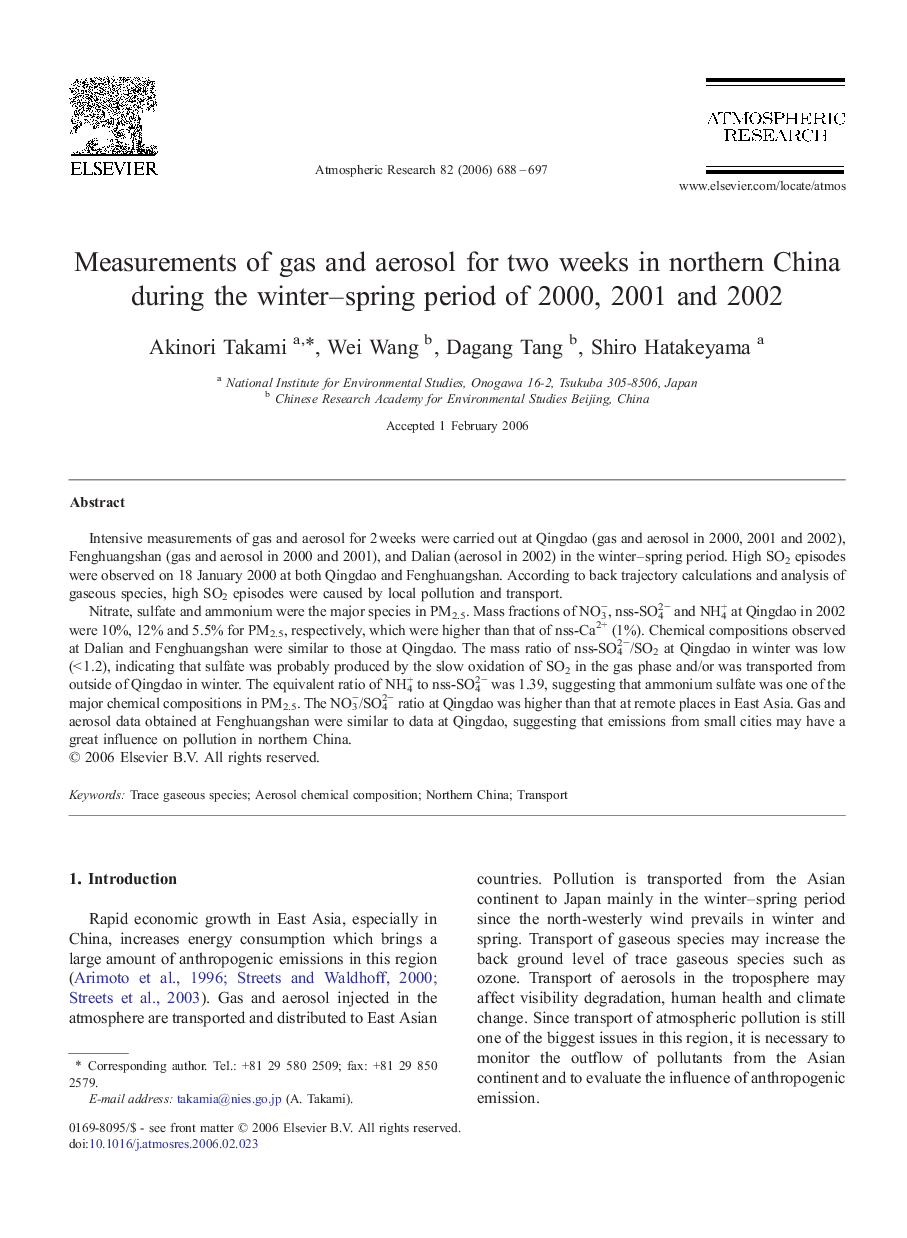| کد مقاله | کد نشریه | سال انتشار | مقاله انگلیسی | نسخه تمام متن |
|---|---|---|---|---|
| 4451521 | 1620578 | 2006 | 10 صفحه PDF | دانلود رایگان |

Intensive measurements of gas and aerosol for 2 weeks were carried out at Qingdao (gas and aerosol in 2000, 2001 and 2002), Fenghuangshan (gas and aerosol in 2000 and 2001), and Dalian (aerosol in 2002) in the winter–spring period. High SO2 episodes were observed on 18 January 2000 at both Qingdao and Fenghuangshan. According to back trajectory calculations and analysis of gaseous species, high SO2 episodes were caused by local pollution and transport.Nitrate, sulfate and ammonium were the major species in PM2.5. Mass fractions of NO3−, nss-SO42− and NH4+ at Qingdao in 2002 were 10%, 12% and 5.5% for PM2.5, respectively, which were higher than that of nss-Ca2+ (1%). Chemical compositions observed at Dalian and Fenghuangshan were similar to those at Qingdao. The mass ratio of nss-SO42−/SO2 at Qingdao in winter was low (< 1.2), indicating that sulfate was probably produced by the slow oxidation of SO2 in the gas phase and/or was transported from outside of Qingdao in winter. The equivalent ratio of NH4+ to nss-SO42− was 1.39, suggesting that ammonium sulfate was one of the major chemical compositions in PM2.5. The NO3−/SO42− ratio at Qingdao was higher than that at remote places in East Asia. Gas and aerosol data obtained at Fenghuangshan were similar to data at Qingdao, suggesting that emissions from small cities may have a great influence on pollution in northern China.
Journal: Atmospheric Research - Volume 82, Issues 3–4, December 2006, Pages 688–697